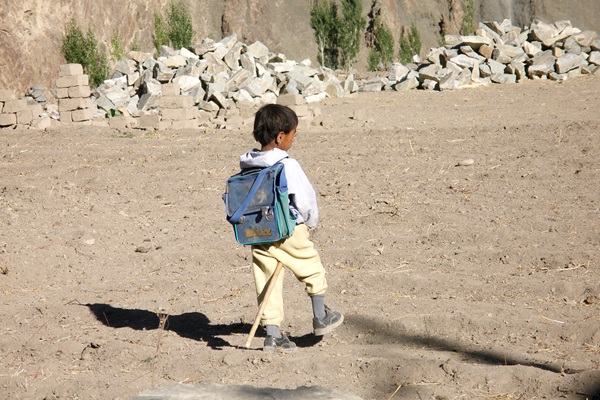.png)
Collaborative Federalism: Moving Beyond Symbolism
India’s vision of federalism is leaving citizens to navigate fractured education systems, crumbling cities, and neglected public services. True collaborative federalism must prioritise tangible outcomes and not symbolic gestures or political leverage.


Dr. Srinath Sridharan is a Corporate Advisor & Independent Director on Corporate Boards. He is the author of ‘Family and Dhanda’.
April 28, 2025 at 3:57 AM IST
(This is the second part of a two-part series on cooperative federalism. The first part dealt with the success and failures of cooperative federalism in India.)
The National Education Policy of 2020, while visionary in its ambition, has exposed the fault lines of linguistic identity and administrative divergence. States like Tamil Nadu and Kerala have raised valid concerns over language policies and centralised exam structures. More importantly, even states governed by the same political alliance as the Centre have struggled to implement the National Education Policy consistently. This is not merely a failure of politics. It is a warning that national reform, unless grounded in real federal dialogue, will always face friction at the final mile.
India’s education system is fractured not just by resource constraints but by deliberate political design. Despite constitutional promises and increasing budgetary allocations — with public expenditure on education reaching 2.9% of GDP in 2022–23 — outcomes remain deeply disappointing. The Annual Status of Education Report 2022 revealed that as schools reopened after two years of closure due to COVID-19, foundational learning levels in reading and arithmetic have declined sharply across most states. Yet, the response has been fragmented and slow.
The National Education Policy, envisioned as a transformative blueprint, is caught in a web of linguistic resistance, bureaucratic inertia, and politicised narratives. States selectively implement reforms that suit their ideological leanings while ignoring core systemic issues such as teacher absenteeism, infrastructure deficits and digital inequality. What is worse, education appears to be kept broken in many states to preserve its utility as a political tool — a lever for patronage, mobilisation and identity-based contestation.
This is a betrayal of the demographic dividend. The politicisation of curriculum, medium of instruction and examination frameworks has turned young learners into instruments of vote-bank strategy rather than citizens-in-the-making. If India is to realise its long-term aspirations, education must be insulated from political expediency and restored as a foundational project of cooperative federal governance.
Worryingly, the deterioration is most visible at the municipal level. India’s cities are struggling with crumbling roads, waterlogging, endless traffic, and localised corruption. These are core governance functions — star-level subjects in any civic framework. And yet, the political discourse rarely centres them. Citizens remain hostage to institutional confusion, where states blame municipalities and municipalities point fingers at the Centre.
The result is a vacuum of accountability. Electoral democracy is offered as the remedy — that voters will reward or punish through the ballot. But at the local level, choices are often Hobson’s. The structural design offers no real alternatives, only variations of dysfunction.
This is not an argument against federalism. It is an argument for its renewal. Collaborative federalism cannot be confined to economic negotiations or crisis management. It must be built into the everyday functioning of governance. States must be equal partners not just in rhetoric, but in design and delivery. The federal idea must be infused with institutional vitality. The Inter-State Council must be revived as a regular forum. The Finance Commission must move beyond arithmetic and reimagine accountability. Municipal governance must be liberated from political marginality. And all three tiers of government must be bound by a shared responsibility to serve the citizen, not merely their own structures.
Currently, while there is undeniable progress in infrastructure, digital delivery, and welfare schemes, we do not yet see a cohesive model of collaborative federalism that places the citizen at the centre. What exists often appears more performative than principled — a framework that functions selectively, driven by political alignment rather than constitutional ethos.
The machinery of federal cooperation, where it works, frequently serves those in political governance more than it serves the governed. States and the Centre too often engage in tactical coordination, not structural collaboration. The citizen, meanwhile, remains a passive recipient rather than an active stakeholder in this process. Until federalism is reimagined as a citizen-first enterprise rather than a contest for administrative turf or electoral advantage, its transformative potential will remain under-realised.
If collaborative federalism is to be truly impactful — not merely deliver outcomes, but transform lives — shouldn’t its success be measured by the lived experience of its citizens? Shouldn’t we be asking why, despite a decade of institutional cooperation, financial transfers, and central schemes, our cities remain so profoundly broken? Why do potholes, overflowing drains, and crumbling footpaths define the daily reality of urban India? Why does traffic congestion steal hours from productivity and peace, while public transport systems creak under the weight of neglect and poor planning? Why are urban local bodies persistently underfunded and disempowered, when they are closest to the citizen? Should it not worry us that in the very places where India’s aspirations are concentrated — its cities — the quality of life is deteriorating with each passing year? Can we still claim that federalism is working if urban governance is visibly failing — in sanitation, housing, air quality, waste management, and civic accountability? And at what point will we accept that the health of our democracy is not in proclamations of development, but in the dignity and functionality of everyday life for every citizen?
So then, what truly defines the success of collaborative federalism? Is it the frequency of Council meetings, the volume of budgetary allocations, or the signing of memoranda between layers of government? Or should it be measured by the visible, tangible improvement in the everyday lives of citizens — in cleaner cities, functioning schools, dignified healthcare, and accountable local governance? Shouldn’t its benchmark be the dignity it restores to the citizen, not the leverage it gives to the political class? And if that impact remains elusive, are we willing to confront the uncomfortable possibility — that the phrase “collaborative federalism” may increasingly become less about the republic and more about the rise of many political and bureaucratic careers in its name?
Constitutional scholars and policy practitioners often admire India’s federal architecture for its scale and ingenuity. But admiration must now yield to application. The republic needs outcomes, not only intentions. We do not need to erase our differences – we need to manage them with maturity. The next decade must not be one of symbolic federalism but of substantive cooperation. The success of India’s development story depends not only on the power of the Centre or the aspirations of the states. It rests on their ability to build a republic together — one that is greater than the sum of its parts.



